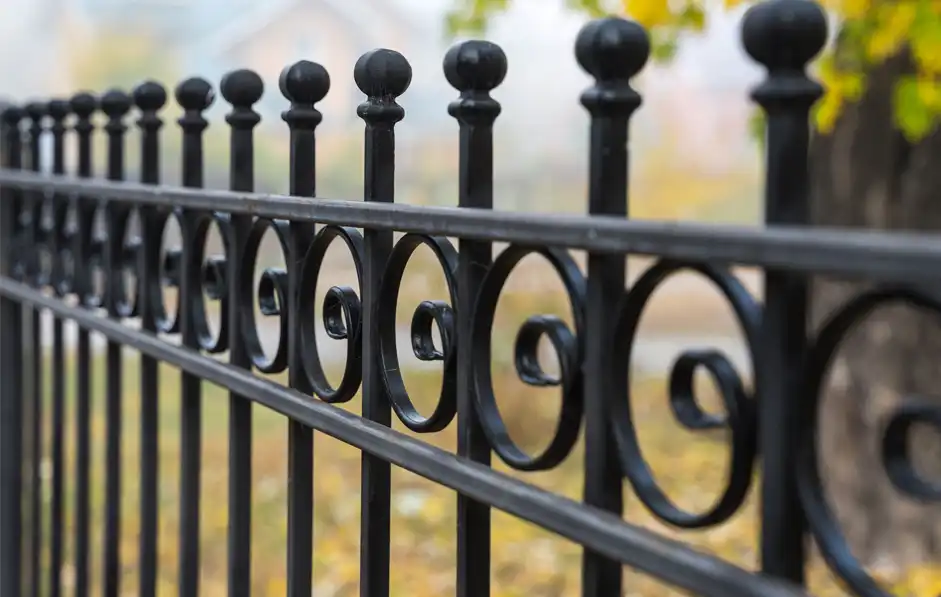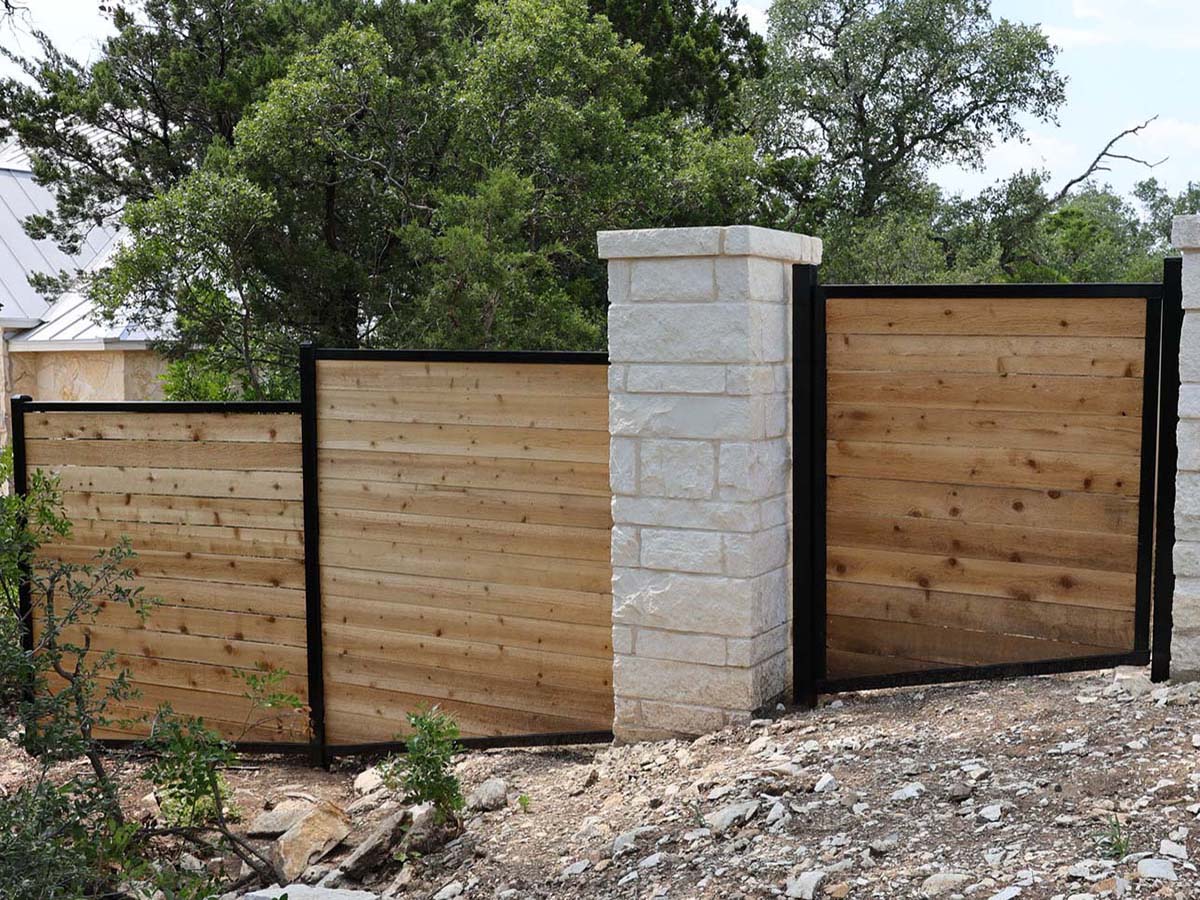All Categories
Featured
Your fence is revealed to various weather conditions year-round, and while it serves as an essential part of your residential property, it's additionally one of the most prone elements when it comes to weather-related damages. Here are some efficient methods to safeguard your fence from weather-related damage.
Wooden Fencings: While timber is a traditional choice for fence, it is at risk to insect, rot, and warping damages, particularly in locations with high dampness. Pressure-treated wood or cedar is extra long lasting, however routine upkeep is necessary to keep it in good problem. Vinyl Fence: Plastic is an exceptional option for those trying to find a low-maintenance and weather-resistant fencing. It's invulnerable to moisture, won't warp or split in the warmth, and resists fading from UV rays. Steel Fence: Wrought iron and light weight aluminum are durable materials for fencing, yet they require a rust-resistant coating to secure them from rust because of dampness. A protective layer or regular maintenance can stop corrosion and extend the life of steel fencings. Composite Fence: Made from a blend of timber fibers and plastic, composite fences are extremely resistant to weather aspects, consisting of moisture, heat, and UV rays. This product uses a balance of sturdiness and visual allure. Selecting a product suited to your climate will offer far better defense for your fence in the long-term.
Seal or Discolor the Timber: Using a top notch sealer or tarnish to your wood fence develops a waterproof obstacle that avoids wetness from going into the timber. It additionally assists secure the wood from UV rays, which can create staining and drying. Reapply Sealant Consistently: In time, the protective obstacle of your sealant or stain can wear down. Depending on your climate, it's a great concept to reapply every one to 2 years to keep the timber safeguarded. This treatment will certainly preserve the fencing's look, protect against rot, and lengthen its lifespan.
![]()
For additional protection, think about making use of wind-resistant mesh displays or panels in areas where wind is a considerable concern. This extra layer can assist minimize the force that the wind applies on your fencing.
Check Drain: Make certain that the ground around your fence inclines away from the blog posts. Proper drainage allows water to stream away from the fence, preventing dampness accumulation. Set Up Drainage Systems: In areas where drain is a worry, take into consideration including a French drain or gravel around the base of your fence posts to reroute water far from the structure. Good water drainage can stop rot, rust, and other kinds of weather-related wear and tear.
![]()
![]()
Concrete Grounds: Establish fencing messages in concrete to stop them from loosening up with time because of dirt disintegration or moving ground. Metal Dental Braces: Adding metal dental braces to fence articles can provide extra stamina and decrease the risk of damaging or leaning. Strengthening your messages makes certain that your fencing will remain in location, also throughout serious weather.
For wood fences, carefully wash the surface with a light cleaning agent to remove dust and crud. For plastic fencings, use a soft fabric and cleansing solution to stop accumulation. For steel fences, check for corrosion and sand it off before applying a fresh coat of paint. Conclusion. Your fencing is an essential attribute of your residential or commercial property, and with the ideal care, it can hold up against the challenges postured by the weather condition. By choosing long lasting products, doing routine upkeep, and strengthening weak points, you can shield your fence from the components and extend its life. Normal assessments, applying protective coverings, and taking steps to control moisture and wind exposure will certainly aid make certain that your fence continues to be strong, practical, and attractive for several years ahead.
- Select Weather-Resistant Materials. The products you pick for your fencing can have a major effect on its capacity to endure the elements. Different materials are much better equipped to deal with details weather condition conditions. Right here's a breakdown of just how various products hold up against the weather condition:
Wooden Fencings: While timber is a traditional choice for fence, it is at risk to insect, rot, and warping damages, particularly in locations with high dampness. Pressure-treated wood or cedar is extra long lasting, however routine upkeep is necessary to keep it in good problem. Vinyl Fence: Plastic is an exceptional option for those trying to find a low-maintenance and weather-resistant fencing. It's invulnerable to moisture, won't warp or split in the warmth, and resists fading from UV rays. Steel Fence: Wrought iron and light weight aluminum are durable materials for fencing, yet they require a rust-resistant coating to secure them from rust because of dampness. A protective layer or regular maintenance can stop corrosion and extend the life of steel fencings. Composite Fence: Made from a blend of timber fibers and plastic, composite fences are extremely resistant to weather aspects, consisting of moisture, heat, and UV rays. This product uses a balance of sturdiness and visual allure. Selecting a product suited to your climate will offer far better defense for your fence in the long-term.
- Routinely Deal With Wood Fences. Securing it from moisture, temperature, and sunlight variations is essential if you have a wood fencing. Wood can soak up dampness from humidity, rainfall, or snow, triggering it to rot and wear away. Below's exactly how you can protect wooden fencings:
Seal or Discolor the Timber: Using a top notch sealer or tarnish to your wood fence develops a waterproof obstacle that avoids wetness from going into the timber. It additionally assists secure the wood from UV rays, which can create staining and drying. Reapply Sealant Consistently: In time, the protective obstacle of your sealant or stain can wear down. Depending on your climate, it's a great concept to reapply every one to 2 years to keep the timber safeguarded. This treatment will certainly preserve the fencing's look, protect against rot, and lengthen its lifespan.

- Mount Windbreaks. Strong winds can create substantial damages to fences, especially those made of tall structures or light-weight products. These all-natural barriers can aid deflect wind, stopping straight gusts from damaging your fence.
For additional protection, think about making use of wind-resistant mesh displays or panels in areas where wind is a considerable concern. This extra layer can assist minimize the force that the wind applies on your fencing.
- Guarantee Correct Drainage Around Your Fencing. Standing water is among the leading reasons for fence damage, particularly for wooden fences. Water can damage the fencing messages, creating them to rot and deteriorate quicker. To avoid this:
Check Drain: Make certain that the ground around your fence inclines away from the blog posts. Proper drainage allows water to stream away from the fence, preventing dampness accumulation. Set Up Drainage Systems: In areas where drain is a worry, take into consideration including a French drain or gravel around the base of your fence posts to reroute water far from the structure. Good water drainage can stop rot, rust, and other kinds of weather-related wear and tear.

- Trim Overhanging Branches and Vines. Trees and plants near your fencing may feel like an attractive enhancement, however they can posture dangers when left unchecked. Looming tree branches and vines can create damage to your fence during storms or high winds. Additionally, creeping plants can catch dampness against wooden fencings, speeding up the rotting procedure. To shield your fencing, trim any kind of branches or plants that hang over or near the fence frequently. This will reduce the possibility of dropping particles and prevent moisture accumulation.
- Enhance Fencing Posts. The stability of your fence greatly depends upon the condition of the articles. Fencing articles are vulnerable to moving, leaning, and rotting, especially throughout durations of severe weather condition. If your fencing remains in an area that experiences high winds or ices up during winter months, it is very important to reinforce the articles to keep stability. Some means to reinforce your fence blog posts consist of:

Concrete Grounds: Establish fencing messages in concrete to stop them from loosening up with time because of dirt disintegration or moving ground. Metal Dental Braces: Adding metal dental braces to fence articles can provide extra stamina and decrease the risk of damaging or leaning. Strengthening your messages makes certain that your fencing will remain in location, also throughout serious weather.
- Regular Examinations and Maintenance. Routine assessments are vital for determining early indicators of weather-related damages. Check your fencing after storms or heavy rainfall to try to find concerns such as loose boards, drooping articles, or rusted locations. Early discovery of small problems can save you from pricey repairs later. Furthermore, cleansing your fence regularly aids keep its condition. For instance:
For wood fences, carefully wash the surface with a light cleaning agent to remove dust and crud. For plastic fencings, use a soft fabric and cleansing solution to stop accumulation. For steel fences, check for corrosion and sand it off before applying a fresh coat of paint. Conclusion. Your fencing is an essential attribute of your residential or commercial property, and with the ideal care, it can hold up against the challenges postured by the weather condition. By choosing long lasting products, doing routine upkeep, and strengthening weak points, you can shield your fence from the components and extend its life. Normal assessments, applying protective coverings, and taking steps to control moisture and wind exposure will certainly aid make certain that your fence continues to be strong, practical, and attractive for several years ahead.
Latest Posts
Find Out Reduce Expenses on Car Maintenance with Montclare Auto Repair’s Limited-Time Deals
Published May 26, 25
1 min read
Uncover Oil Changes & More: Complete Services Guide from Montclare Auto Repair
Published May 25, 25
1 min read
Unlock Your Financial Partner at WyHy – Top Benefits for Your Money Goals
Published May 25, 25
1 min read
More
Latest Posts
Find Out Reduce Expenses on Car Maintenance with Montclare Auto Repair’s Limited-Time Deals
Published May 26, 25
1 min read
Uncover Oil Changes & More: Complete Services Guide from Montclare Auto Repair
Published May 25, 25
1 min read
Unlock Your Financial Partner at WyHy – Top Benefits for Your Money Goals
Published May 25, 25
1 min read